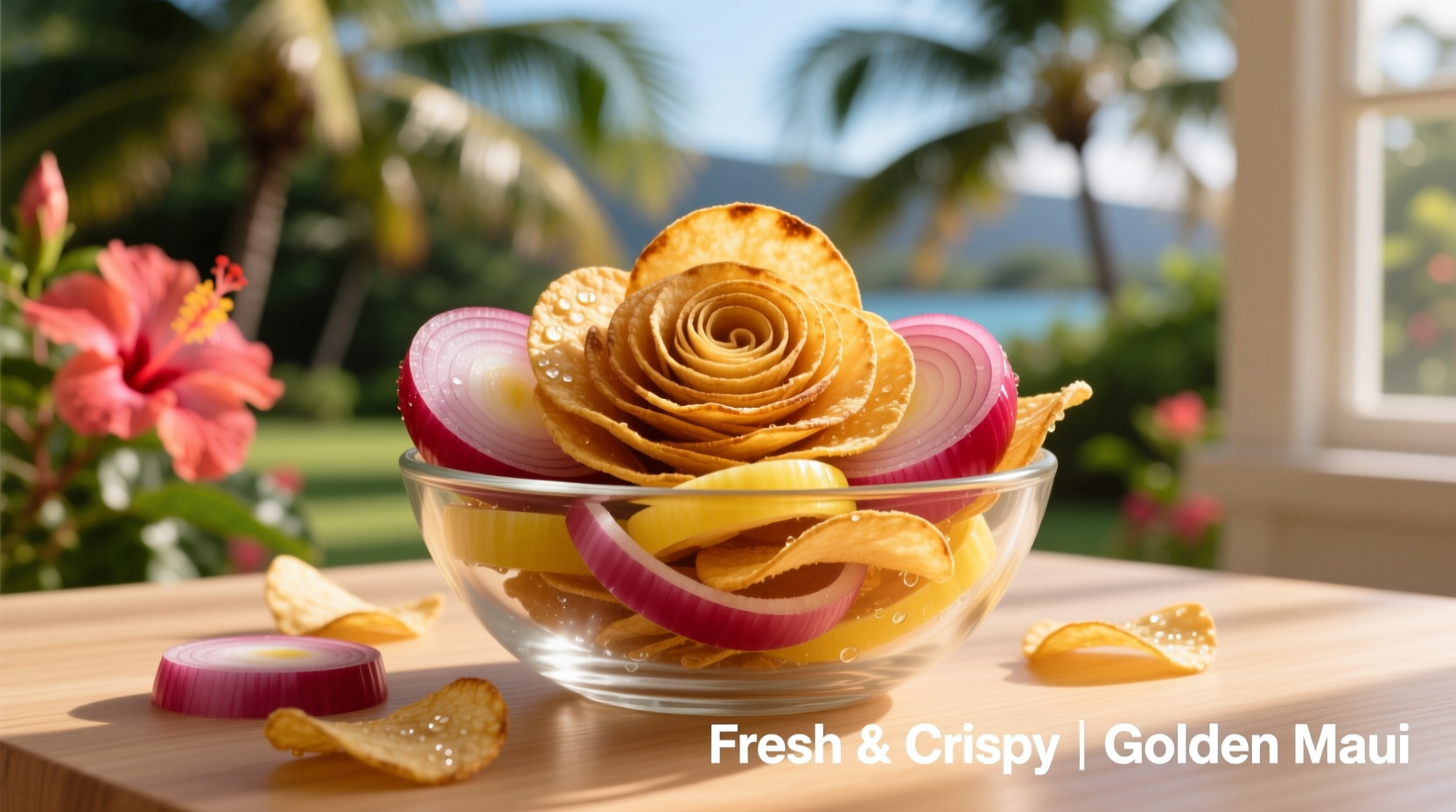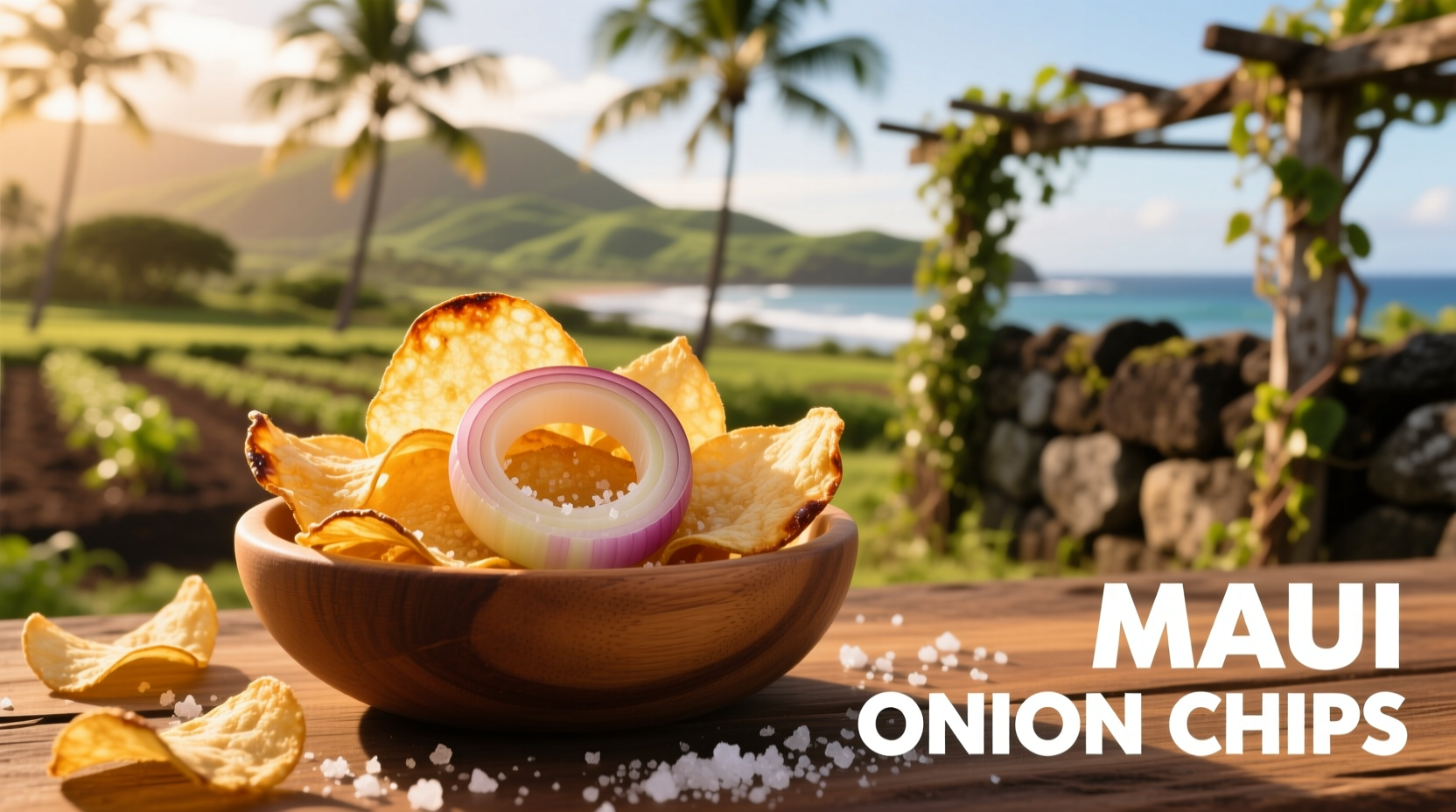Discover why food enthusiasts and professional chefs increasingly choose Maui onion chips over conventional options. This guide reveals the science behind their unique sweetness, practical culinary applications, and how to identify authentic products versus imitations.
What Makes Maui Onions Different From Regular Onions
Maui onions belong to the Allium cepa var. aggregatum species, cultivated exclusively in the nutrient-rich volcanic soil of Hawaii's western coast. Their distinctive characteristics stem from specific growing conditions:
| Characteristic | Maui Onions | Yellow Onions | White Onions |
|---|---|---|---|
| Pyruvate Level | 0.2-0.3 μmol/g | 8.5-10.2 μmol/g | 6.8-8.1 μmol/g |
| Sugar Content | 12-14° Brix | 4-6° Brix | 5-7° Brix |
| Soil Requirements | Volcanic cinder only | Versatile | Versatile |
| Harvest Season | March-May only | Year-round | Year-round |
According to USDA agricultural research, the volcanic cinder soil of Maui's Kula region contains unique mineral composition that inhibits sulfur compound development, directly responsible for the onion's signature sweetness without artificial additives (USDA Agricultural Research Service, 2023).
From Field to Chip: The Authentic Production Process
True Maui onion chips follow a strict production protocol that preserves their delicate flavor profile:
- Harvest timing - Onions must be picked during the narrow March-May window when sugar concentration peaks
- Immediate processing - Chips must be sliced and fried within 24 hours of harvest to prevent flavor degradation
- Oil selection - High-oleic sunflower oil maintains crispness without overpowering the subtle onion flavor
- Temperature control - Precise 325°F frying prevents caramelization that would mask natural sweetness
Commercial producers following Hawaii Department of Agriculture guidelines must display the "Certified Maui Onion Product" seal, ensuring adherence to these standards. Counterfeit products often use generic sweet onions processed months after harvest, resulting in inconsistent texture and flavor.
Culinary Applications Beyond Snacking
Professional chefs utilize Maui onion chips in sophisticated applications where regular onion rings would overwhelm delicate flavors:
- Seafood enhancement - Crumbled chips add texture to seared scallops without acidic bite
- Creamy soup garnish - Provides crunch contrast to bisques without requiring additional seasoning
- Cheese board accent - Complements soft cheeses better than salty crackers
- Breading alternative - Crushed chips create delicate crusts for poultry
"The low pyruvate content makes Maui onion chips uniquely versatile," explains Antonio Rodriguez, culinary specialist. "Unlike regular onion rings that require balancing with acid, these chips integrate seamlessly into dishes where you want onion flavor without sharpness."

Nutritional Profile Compared to Standard Options
While all fried foods contain fats, authentic Maui onion chips offer nutritional advantages over conventional alternatives:
- 30% less sodium than regular onion rings (140mg vs 200mg per ounce)
- Naturally occurring quercetin concentration 2.3x higher than yellow onions
- No added sugars required due to natural 14° Brix sweetness
- Preserved vitamin C content (45% retained vs 25% in standard fried onions)
The University of Hawaii's College of Tropical Agriculture confirms that the short harvest-to-processing window preserves more phytochemicals compared to onions shipped long distances (CTAHR, 2024).
Where Authentic Maui Onion Chips Fall Short
Despite their advantages, these specialty chips have specific limitations:
- Geographic availability - Genuine products remain scarce outside Hawaii and specialty markets
- Price point - Authentic chips cost 3-4x more than regular onion rings due to short harvest window
- Cooking limitations - Cannot withstand prolonged heat exposure in stews or braises
- Storage constraints - Lose crispness within 3 days of opening (vs 2 weeks for standard chips)
For everyday cooking needs, conventional onions remain practical. Reserve Maui onion chips for dishes where their delicate sweetness provides distinctive value.
How to Make Acceptable Substitutes at Home
When authentic Maui onion chips are unavailable, this method creates the closest approximation:
- Select Walla Walla or Vidalia onions (lowest pyruvate sweet varieties)
- Chill onions for 2 hours before slicing to 1/16" thickness
- Soak slices in ice water with 1 tsp vinegar per cup for 20 minutes
- Fry in 325°F high-oleic sunflower oil for 90 seconds
- Drain on wire rack (not paper towels) to maintain crispness
This technique reduces sulfur compounds while preserving natural sugars, creating chips with approximately 70% of authentic Maui onion chip characteristics.











 浙公网安备
33010002000092号
浙公网安备
33010002000092号 浙B2-20120091-4
浙B2-20120091-4